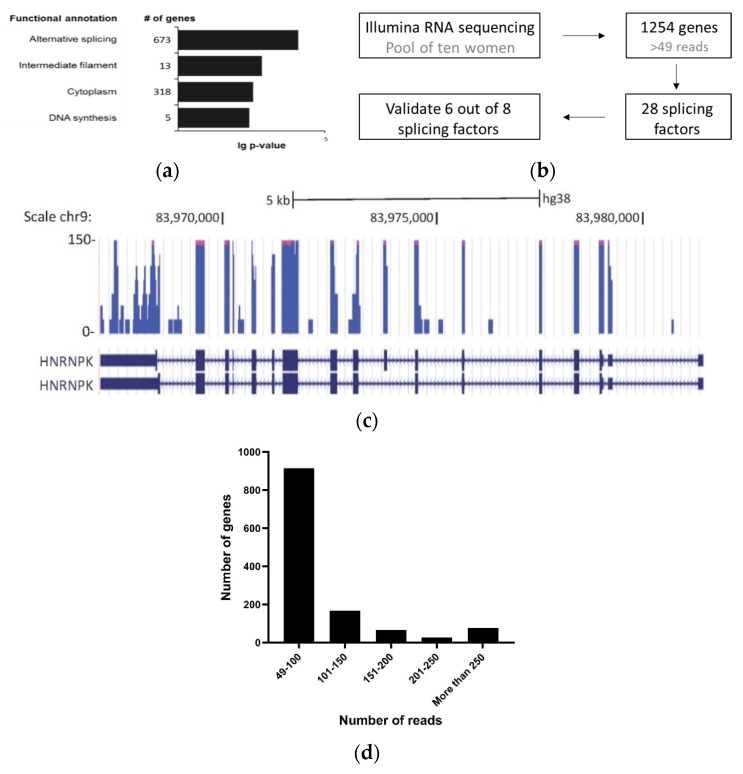Figure 1.
Enrichment of alternative splicing proteins in saliva cell-free RNA. The RNA-seq of cell-free RNA was extracted from the saliva of ten women. (a) Functional analysis of the 1254 transcripts identified was conducted using the DAVID functional annotation tool (DAVID, https://david.ncifcrf.gov/). (b) Schematic representation of the splicing factors chosen from the RNA-seq to use for the diagnostic test. (c) UCSC Genome Browser screen shot of RNA-seq data at the HNRNPK locus gene (reference genomeGRCh38/hg38). HNRNPK exon 8 alternative splicing was indicated by the RNA-seq results. (d) Transcript abundance in cell-free saliva represented by the number of genes relative to number of reads.

